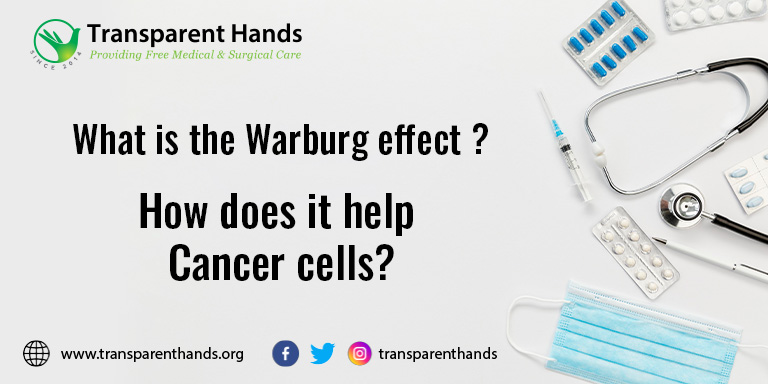What is the Warburg Effect? How Does it Fuel Cancer Cells?

The Warburg effect, first observed by German physiologist Otto Warburg in the 1920s, refers to a distinct metabolic characteristic of cancer cells. Unlike normal cells that predominantly generate energy through oxygen-dependent aerobic respiration, cancer cells predominantly rely on glycolysis, an oxygen-independent process, even in the presence of ample oxygen. This metabolic shift, known as aerobic glycolysis, is a hallmark of many cancer types and plays a crucial role in tumor growth and survival. This article explores the phenomenon of the Warburg effect, its underlying mechanisms, and its implications in cancer development and progression.
The Warburg Effect Unveiled
The Warburg effect involves the conversion of glucose into lactic acid even in the presence of sufficient oxygen. While aerobic glycolysis is a less efficient way to produce energy compared to oxidative phosphorylation, cancer cells preferentially adopt this metabolic pathway to meet their increased demand for energy and biosynthetic precursors. This metabolic reprogramming is a hallmark of many cancer types and plays a crucial role in tumor growth and survival. By relying on glycolysis, cancer cells can rapidly generate adenosine triphosphate (ATP) and essential metabolites to support their uncontrolled growth and proliferation.
Mechanisms Behind the Warburg Effect
The exact mechanisms driving this phenomenon are complex and multifaceted. Several key factors contribute to this metabolic switch in cancer cells:
- Oncogenic Signaling: Mutations in oncogenes and tumor suppressor genes can dysregulate the signaling pathways involved in cellular metabolism. For example, activation of the PI3K/AKT/mTOR pathway can promote glycolysis and suppress oxidative phosphorylation in cancer cells.
- Hypoxia-Inducible Factor (HIF): Tumor microenvironments often suffer from inadequate oxygen supply, leading to hypoxia. HIF, a transcription factor activated under hypoxic conditions, upregulates glycolytic enzymes, enhancing the Warburg effect.
- P53 Suppression: The tumor suppressor protein p53 normally inhibits glycolysis and promotes oxidative phosphorylation. However, in many cancer cells, p53 is either mutated or functionally impaired, leading to enhanced glycolytic activity.
- Altered Mitochondrial Function: Mitochondrial defects and impaired oxidative phosphorylation in cancer cells may further drive their reliance on glycolysis for energy production.
Implications in Cancer Progression
This effect confers several advantages to cancer cells, influencing tumor growth and survival:
- Enhanced Proliferation: Glycolysis provides cancer cells with a rapid and efficient way to produce ATP and macromolecules required for cell division, supporting their uncontrolled growth.
- Acidic Microenvironment: The production of lactic acid through glycolysis leads to the accumulation of lactate in the tumor microenvironment. This acidification promotes tumor invasion, metastasis, and immune evasion.
- Resistance to Apoptosis: Glycolytic intermediates can protect cancer cells from apoptosis, promoting their survival under stressful conditions.
- Angiogenesis Stimulation: The Warburg effect induces the secretion of angiogenic factors, promoting the formation of new blood vessels that supply nutrients and oxygen to the growing tumor.
Targeting the Warburg Effect for Cancer Therapy
Given its role in cancer progression, this phenomenon has emerged as a potential target for cancer therapy. Researchers are exploring various strategies to disrupt this metabolic adaptation in cancer cells, aiming to curb tumor growth and sensitize cancer cells to conventional treatments.
- Metabolic Inhibitors: Drugs targeting glycolysis, such as 2-deoxyglucose (2-DG) and lonidamine, have shown promise in preclinical studies for reducing tumor growth.
- HIF Inhibitors: Agents that inhibit HIF-1α, a key player in this concept, are being investigated for their potential to suppress glycolysis and limit tumor progression.
- Immunotherapy Combinations: Combining immunotherapies with metabolic inhibitors may enhance the anti-tumor immune response by altering the tumor microenvironment.
Conclusion
The Warburg effect represents a metabolic adaptation in cancer cells that confers various advantages supporting tumor growth and survival. While the exact mechanisms governing this metabolic switch are still being unraveled, it is evident that targeting it holds promise as a novel approach for cancer therapy. As ongoing research sheds more light on the intricacies of cancer metabolism, the development of effective and targeted therapies aimed at disrupting this phenomenon may hold the key to unlocking new avenues in cancer treatment and improving patient outcomes. By understanding the Warburg effect’s significance, researchers and clinicians can continue to advance precision medicine and personalized cancer treatments, moving one step closer to defeating this devastating disease.










Leave a Reply